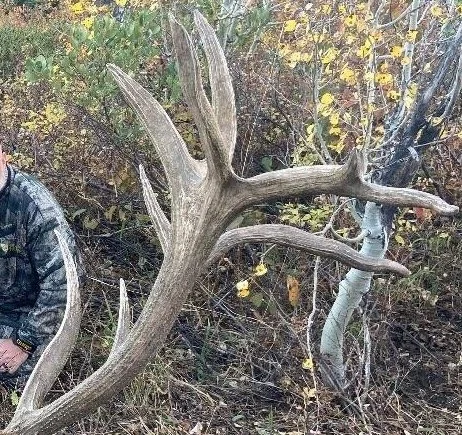Elk vs. Moose: The Ultimate Comparison Guide
Elk and moose are two of North America's most iconic and sought-after large mammals. And yeah — they get confused a lot. They live in similar places and from a distance, they might even look alike. But the truth is, they’re different animals.
From size and antlers to behavior and habitat, moose and elk have some serious differences. In this guide, we’ll break it all down in simple terms to help you tell them apart. Whether you’re a hunter, hiker, or just someone who thinks these animals are as majestic as they are fascinating, this one's for you.
Physical Differences
When it comes to telling elk and moose apart, size isn’t the only thing that stands out. From the shape of their antlers to the color of their coat and even the structure of their nose, these animals have some pretty noticeable physical differences. Let’s break down what sets them apart so you can spot them.
Facial Features
Moose have a distinctive, large, bulbous nose and dewlap (also known as a bell) hanging from their throat. Elk have a narrower, pointed nose and lack a dewlap
Moose Nose
Elk Nose
Size and Weight
Probably the one that most people compare is their size. Moose are the largest members of the deer family, with adult males (bulls) standing up to 7 feet at the shoulder and weighing between 840 to 1,550 pounds. Elk are smaller, with male bulls standing 4.5 to 5.5 feet at the shoulder and weighing between 485 to 730 pounds (elk size guide).
Antlers
Elk Antlers are long and pointed, extending backward over their bodies with multiple tines branching off a main beam. In contrast moose antlers are broad and flat, resembling open hands or paddles, and can span over 6 feet across
Elk Antlers
Moose Antlers
Habitat and Range
Elk
Elk are adaptable and inhabit various environments, including open forests, grasslands, and mountainous regions across North America, Europe, and Asia. They are commonly found in the western United States, with populations in states like Colorado, Utah, and Montana.
Moose
Moose prefer colder climates and are typically found in northern forests, wetlands, and boreal regions. In North America, they inhabit areas from Alaska and Canada down into the northern United States, including parts of New England, Idaho, and Montana. You may find some in the Rocky Mountains as well. If you check a moose population map, that might help you determine the best place to find moose.
Behavior and Social Structure
Elk
Elk are social animals that form large herds, especially during the mating season A.K.A elk rut season. Males are known for their high-pitched bugling calls used to attract females and establish dominance.
Moose
Moose are generally solitary, except for mothers with calves. They communicate using deep grunts or bellows and are more likely to stand their ground when threatened, especially during the rut or when protecting their young.
Tracks and Signs
Identifying tracks can help distinguish between elk and moose:
Elk Tracks: Typically measure 3.5–4 inches long and have a more pointed, tooth-shaped appearance.
Moose Tracks: Larger, about 5–7 inches long, with a rounded, heart-shaped appearance.
Hunting Considerations
Tag Availability
Elk hunting tags are more readily available in many states, with some offering over-the-counter options. Moose tags are often limited and may require a lottery system, making them more challenging to obtain.
Habitat Challenges
Elk hunting often involves traversing open terrains and mountainous regions, requiring stamina and long-range shooting skills. Moose hunting typically occurs in dense forests and wetlands, necessitating patience and close-range encounters.
Frequently Asked Questions
Are moose and elk the same species?
No, moose (Alces alces) and elk (Cervus canadensis) are two distinct species within the deer family.
Which is more dangerous: moose or elk?
Both animals can be dangerous if provoked, but moose are generally more unpredictable and aggressive, especially during mating season or when with calves.
Can moose and elk interbreed?
No, moose and elk cannot interbreed due to differences in their genetics and mating behaviors.
Conclusion
While elk and moose share some similarities, they are distinct in size, appearance, behavior, and habitat preferences. Understanding these differences enhances wildlife appreciation and ensures safe and respectful interactions in their natural environments. So you're there you have elk vs moose and the differences between them .








